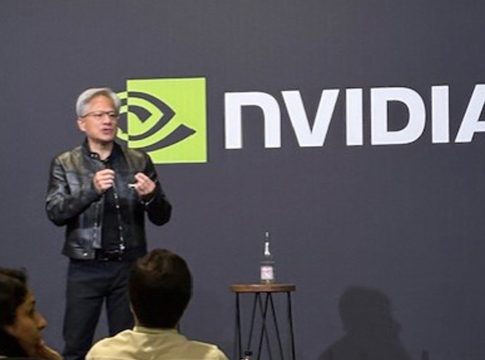AI’s Potential and Concerns: Insights from Nvidia’s CEO Jensen Huang
At the recent VivaTech 2025 conference in Paris, Nvidia’s CEO, Jensen Huang, directly challenged predictions by Dario Amodei, CEO of Anthropic, suggesting that artificial intelligence (AI) could obliterate up to half of entry-level white-collar jobs within the next five years. Huang characterized this prediction as “illogical,” asserting that the narrative surrounding AI’s role in workforce disruptions is overly simplistic.
Dissecting Job Displacement Arguments
Amodei’s grim forecast included a spike in the unemployment rate to between 10% and 20%. Current figures from the Bureau of Labor Statistics indicate a much lower rate of 4.2%. Huang expressed skepticism about the notion that AI would exclusively eliminate jobs, arguing instead that generative AI would transform work across various sectors, potentially resulting in new job opportunities rather than just layoffs. “Companies that are cutting jobs often lack innovative ideas,” he stated, suggesting that the human capacity to innovate will adapt alongside technological advancements.
A Collaborative Approach to AI Safety
One of Huang’s standout points revolved around AI’s potential dangers. He opined that centralizing AI development in a single company, like Anthropic, could inadvertently create risks. Instead, he proposed an open approach, allowing for widespread oversight. “Do it in the open,” he urged, emphasizing that vigilance could come from numerous stakeholders, minimizing the risks associated with rogue AI systems. Monitoring AI behavior is crucial, especially as computing costs decrease and multiple AI systems become feasible.
The Road to Artificial General Intelligence (AGI)
Huang also weighed in on the quest for artificial general intelligence (AGI), delineating clear criteria for what constitutes AGI on an engineering level. It would require AI systems capable of performing a variety of general tasks at or above human levels, such as math and coding. However, he acknowledged that the philosophical implications of AGI remain unresolved.
Advancements in Autonomous Technologies
On the topic of autonomous vehicles, Huang asserted that advancements in large language models (LLMs) could revolutionize driving technology. Current self-driving solutions are often a patchwork of different technologies—radar, cameras, and GPS—that lack seamless integration. Huang envisions a future where AI enables vehicles to engage in conversations with their users, reshaping our interaction with everyday machines, including lawn mowers.
Future Collaborations in AI Infrastructure
In a related development, Huang introduced plans from Mistral AI, which aims to create a robust AI data center infrastructure in Europe, reminiscent of CoreWeave in the U.S. By focusing on optimized data centers specifically for AI workloads, Mistral AI joins a growing trend where cloud computing is evolving to meet the specialized needs of the AI landscape. Nvidia plans to support Mistral by connecting them with potential investors and clients while supplying the necessary chips.
Conclusion
As discussions around AI continue to evolve, the insights from Huang underscore the complexity of the landscape. While concerns about job displacement and AI safety persist, the potential for transformative change is significant. Embracing an open, collaborative approach may be key to navigating both the opportunities and challenges that AI presents in the coming years. As history has shown, innovation often leads to unanticipated outcomes—both positive and negative. The next few years will be crucial in defining how AI reshapes our world.

Writes about personal finance, side hustles, gadgets, and tech innovation.
Bio: Priya specializes in making complex financial and tech topics easy to digest, with experience in fintech and consumer reviews.

